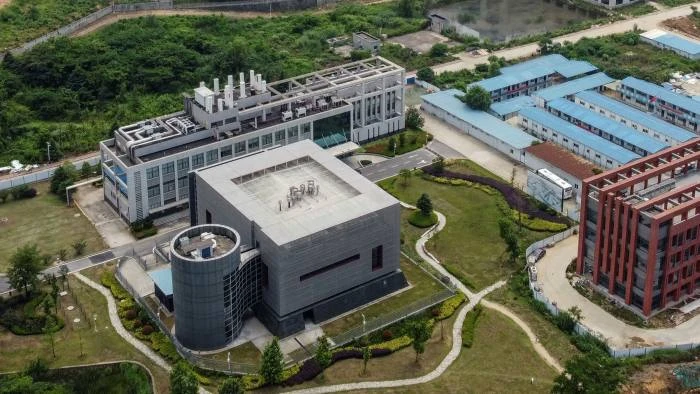
In 2004, the US Centers for Disease Control and Prevention signed an agreement with the Chinese National Influenza Centre to help China improve its analysis of seasonal flu strains.
Over the next 10 years, the fight against the disease was transformed. The US trained nearly 2,500 Chinese scientists and helped open dozens of laboratories in the country, a collaboration that proved instrumental in pushing the efficacy of the seasonal flu vaccine up from 10 per cent to over 50 per cent.
Now scientists are worried this type of collaboration is under threat, imperilled by mutual suspicions between the two governments, which have been exacerbated by the recent row over whether Covid-19 could have come from a lab leak in Wuhan.
China and the US have co-operated on research for decades, in what the Nature Index ranks as the world’s most academically fertile scientific relationship.
The amount of joint research being undertaken exploded in the 2000s, as China opened up and invested more in its scientific research capabilities.
Between 2005 and 2017, the number of papers authored by US and Chinese researchers in high-quality journals jumped sixfold, according to research led by Cong Cao at the University of Nottingham Business School in China. The same research found that the number of scientists in the US who had previously been in China nearly doubled from 2010 to 2017.
Some of the jointly produced work has changed the world.
From 1993 to 1995, the CDC led a research project in China that found lower levels of birth defects in newborn children whose mothers had been taking folic acid for 28 days before and after conception. The US Food and Drug Administration then started requiring that food manufacturers add folic acid to staples such as bread, flour and rice, and as a result, the rate of birth defects in newborn children in the US dropped by about 1,300 a year.
Deborah Seligsohn, an assistant professor of political science at Villanova University and a former state department official, said: “This research would not have been possible in the United States, where everybody goes to a private doctor and the data is so much more disorganised.”
There have also been successes in scientific fields of research unrelated to health.
Since 2009, the countries have worked together on a project to convert Chinese nuclear reactors from using weapons-grade enriched uranium to much lower grades of fuel that cannot be stolen and used in ballistic missiles.
Other elements of research have been more controversial however, with US law enforcement agencies often accusing the Chinese of using collaborative projects to steal sensitive American technology.
Early last year, the US charged Charles Lieber, the chair of Harvard University’s chemistry and chemical biology department, with covering up the fact he was also being paid $50,000 by the Wuhan University of Technology.
The arrest triggered protests by Lieber’s peers, who argued his prosecution was unjust and discouraged scientific co-operation between the US and other countries. But it was also part of a broader push by the Trump administration, known as the “China Initiative”, aimed at weeding out researchers in the US who were helping pass scientific secrets on to China.
Despite the China Initiative, collaboration has deepened in recent years, even after the pandemic hit.
A report by Caroline Wagner, an associate professor in public affairs at Ohio State University, found the number of US-China papers specifically looking at coronaviruses actually increased in the first three months of 2020. The amount of collaborative work dropped later in the year, after Beijing ordered that all Covid-related research be reviewed by the government before publication.
The questions over what was happening at the Wuhan lab before Covid-19 broke out threaten to have an even longer-lasting effect.
Many experts have been critical of the fact that the US was funding and helping carry out risky research into the possible effect of bat coronaviruses on humans at the Wuhan lab — even if that research was not necessarily what caused the pandemic. And they were especially concerned when it was revealed that some of this work had been carried out at biosafety-level two, roughly equivalent to a US dentist’s office.
Marc Lipsitch, professor of epidemiology at Harvard, said: “This kind of work being carried out at BSL-2 cannot be allowed to happen. It should result in your work being defunded and your papers. There have been some very egregious safety practices which need to be stopped.”
Some worry, however, that even relatively safe areas of scientific collaboration are now at risk.
Denis Simon, executive director of the Center for Innovation Policy at Duke University, said: “University administrators are now blocking all sorts of projects because they are scared of headlines which suggest in any way that their scientists are engaging in anything illicit.”
Others warn that by focusing so much on the disputed origins of the coronavirus pandemic, the US could imperil the kind of work that might help prevent the next one.
Seligsohn from Villanova University said: “What the flu research shows is that virus surveillance is incredibly important. Joint US-China research on bat coronaviruses is going to be more important after this pandemic, not less.”




















